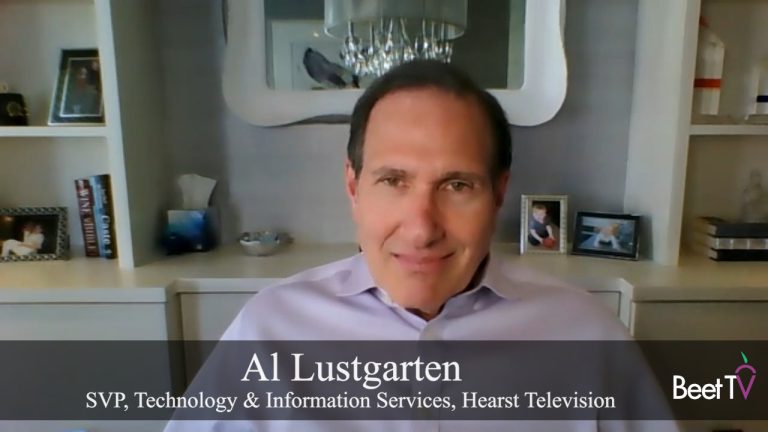
If connected TV technology seems to make it easy to target TV ads at individual households, well, tell that to the people charged with making the spaghetti soup of a system work together.
As powerful as CTV can be, a common complaint is that it remains too complex.
In this video interview with Beet.TV, Al Lustgarten, Senior Vice President, Technology & Information Services, Hearst Television, explains how Hearst tackles the issue.
CTV complexity
“We know our sales are becoming more complex,” he says. The tasks include a strategy that now offers OTT platforms, converged selling methods and advanced ad targeting.
Lustgarten says Hearst is currently figuring accommodating everything. Next up, it wants to develop one platform to embrace it all, “over the next few months”.
For now, though, challenges are sufficient. “We’re experiencing very large growth in our digital business while maintaining our legacy linear broadcast business, and figuring out the path forward to have a unified workflow to accommodate both those lines of business is something that we’re spending a lot of time on currently,” Lustgarten says.
“We’re dealing with disparate platforms. Some of those platforms are legacy, so we’re dealing with platforms that are not necessarily accustomed to doing integrations or developing APIs. We’re working with the vendors to put those in place. Then we have the industry-old issue of dealing with disparate platforms on the buy side of our business and on the sell side of the business.”
Hearst’s tech approach
Lustgarten says Hearst is trying a few technology approaches to make it all work:
- RPA, robotic process automation.
- Working with TIP Initiative, created to develop and publish open transaction interface standards for the broadcast industry.
- Compartmentalizing its tech stack, including separating its online marketplace software )OMS) from its linear traffic system.
- Bringing this separate data into a “data mart”, where it is “normalized”.
“That’s given us a competitive advantage to get all that data and not only use it for decision support, but use it to work with our individual third-party vendors for other services that are wrapping around the tech stack,” Lustgarten adds.
Buy, don’t build
But the different approaches have one thing in common – Hearst doesn’t want to build the software for itself.
“We’ve taken a position at Hearst Television that we would prefer not to build, so we prefer to buy or lease technology,” Lustgarten adds. “So we also have targeted trying to find best of breed technology.
“We’re working with our existing vendors and we accumulated a variety of what we consider best in industry technology. The challenge is trying to get them to all work together.
“Companies like Matrix are very easy to integrate in and out of. Other vendors are not as easy to accomplish that with, but it’s a challenge that we’ve tried to take.”